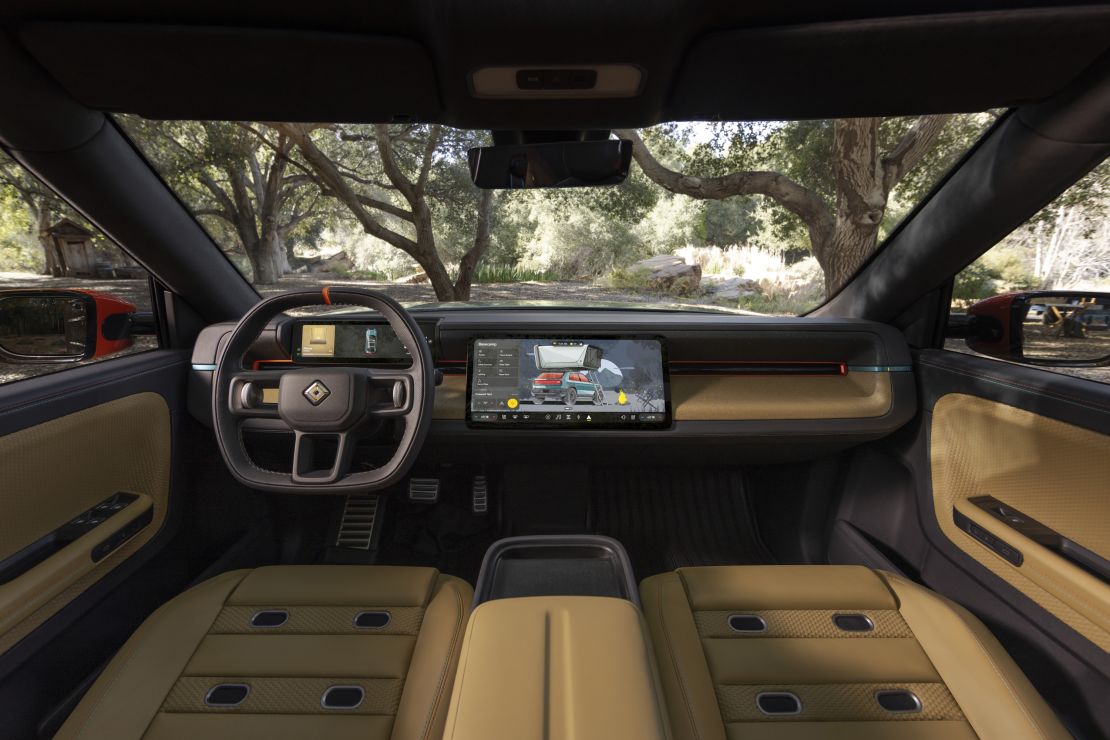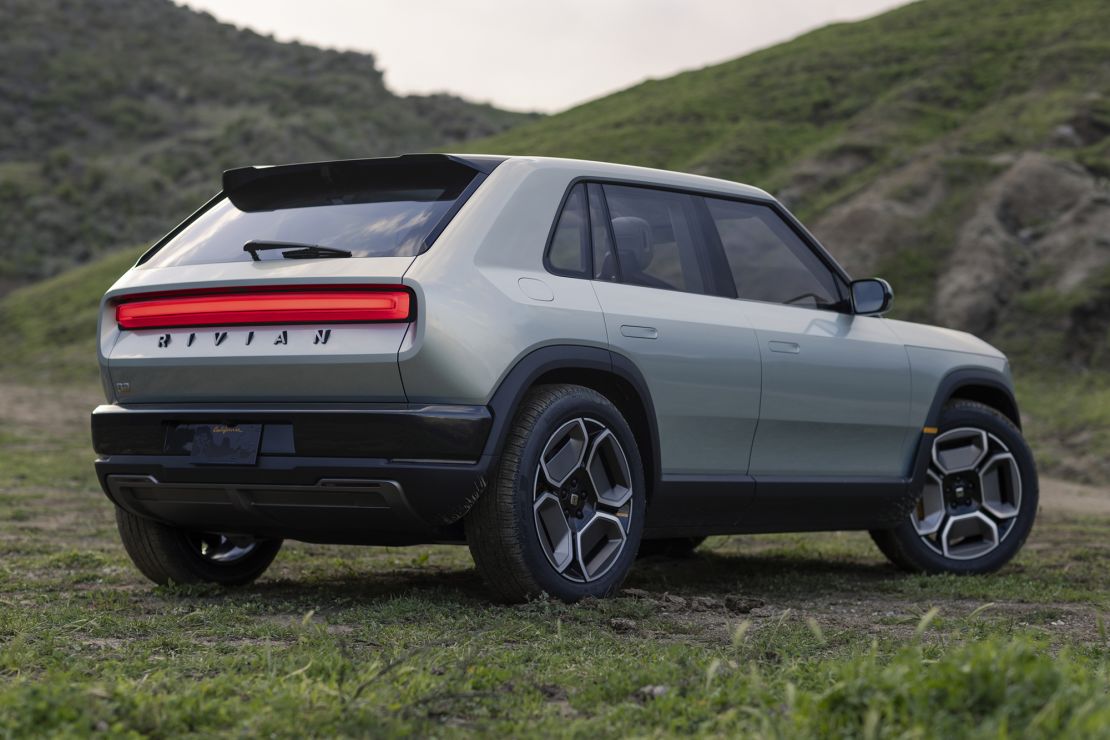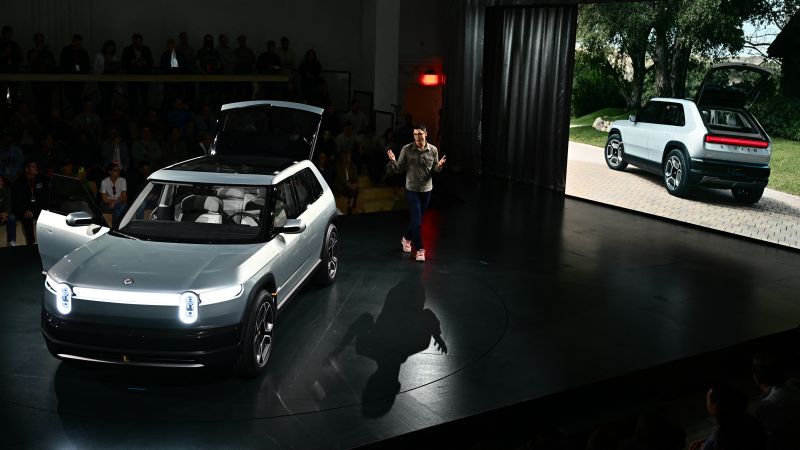Rivian, the electric vehicle startup known for its of-road capable truck and SUV models, has unveiled two new, more affordable SUVs that the company hopes will take its sales to a new level.
Currently, Rivian sells only two models, the big R1T SUV and the the R1S pickup, priced starting around $70,000 and $75,000, respectively. The new SUVs, called the R2 and R3, will be smaller and much less expensive.
Prices for the R2 SUV, which will go on sale in early 2026, will start at around $45,000, Rivian said. At that price, it will still be relatively costly but it’s at least closer to an entry-level luxury vehicle, rather than at the high end.
The R3 will cost even less than the R2, but Rivian didn’t provide any more specific pricing for that model. It will also be smaller, about 5 inches shorter, front to back, than the R2 and with a more sloped rear profile.
The R2 is roughly the length of a Chevrolet Equinox, and neither the R2 and R3 will have a third row of seats. That’s something that set the larger R1S apart among electric SUVs, few of which can seat more than five.
The new SUVs will be available in single-motor versions, which will have rear-wheel-drive. There will also be all-wheel-drive versions with either two or three motors. Three-motor versions will be able to accelerate from a stop to 60 miles an hour in under three seconds, according to Rivian. The R3 will be offered in a special high-performance model called the R3X.
Although Rivian did not disclose specific performance numbers for the R3X, chief executive R.J. Scaringe described it as something like an off-road rally racing car.
“It’s not a rock crawling vehicle, but it’s more of a a higher speed type of vehicle,” he said in an interview with CNN. “You do trails and exploring, but it’s a very high performance vehicle.”

When purchased with larger optional battery packs, the R2 and R3 will be able to go over 300 miles on a full charge, according to Rivian. The SUVs will be able to fast-charge on either Tesla’s NACS chargers, or on the current industry standard CCS chargers. Like most other automakers, Rivian is planning to switch to the Tesla standard.
In announcing the new vehicles, Scaringe also mentioned that plans for opening a second factory in Georgia, something the company had originally announced in 2021, were being postponed. He did not say how long those plans would be delayed, though.
“The Georgia site still very much as part of our our strategy,” Scaringe said in an interview after new vehicles were unveiled.
Rivian’s stock price tumbled recently when the EV maker announced that 2024 sales wouldn’t be much higher than 2023 sales had been, at around 50,000 units. These new models, which won’t go on sale until at least the first half of 2026, won’t do anything to change that in the short term.
And by moving into a lower price range, Rivian isn’t really avoiding competition, noted Sandeep Rao, an industry analyst with Leverage Shares, in an interview with CNN.
Those in the middle and upper income segments of the US EV market are “spoiled for choices,” he said.

“For $75,000 I can buy a Mercedes or a BMW, a 100-year-old Europe power house,” he said. “At 40,000, I can buy a Tesla.”
Rivian will also face higher-end electric SUVs from Kia and Hyundai. But Rivian can set itself apart with vehicles that are actually capable of fairly serious off-road driving, something most electric SUVs don’t even pretend to be able to handle.
But competition is coming, even on forest trails, as Volkswagen Group’s new Scout EV brand is almost directly aimed at Rivian’s customers. Scout, which recently started construction on a factory in South Carolina, expects to begin delivering its own off-road-capable electric truck and SUV models, priced close to the Rivian R2, in 2026, as well.
Without naming Rivian, Scout chief executive Scott Keogh noted the advantage of Scout’s established brand name. “Scout” was the model name of an early SUV made by International Harvester, which was more typically known for heavy duty trucks and farm equipment.
“Those who don’t know [the Scout name], when they do investigate it, that’s exactly what you want with a brand,” Keogh said in a recent CNN interview. “They say ‘Ah, look at the history! Look at the credibility, Look at the background,’ as opposed to a created name.”
Read the full article here
